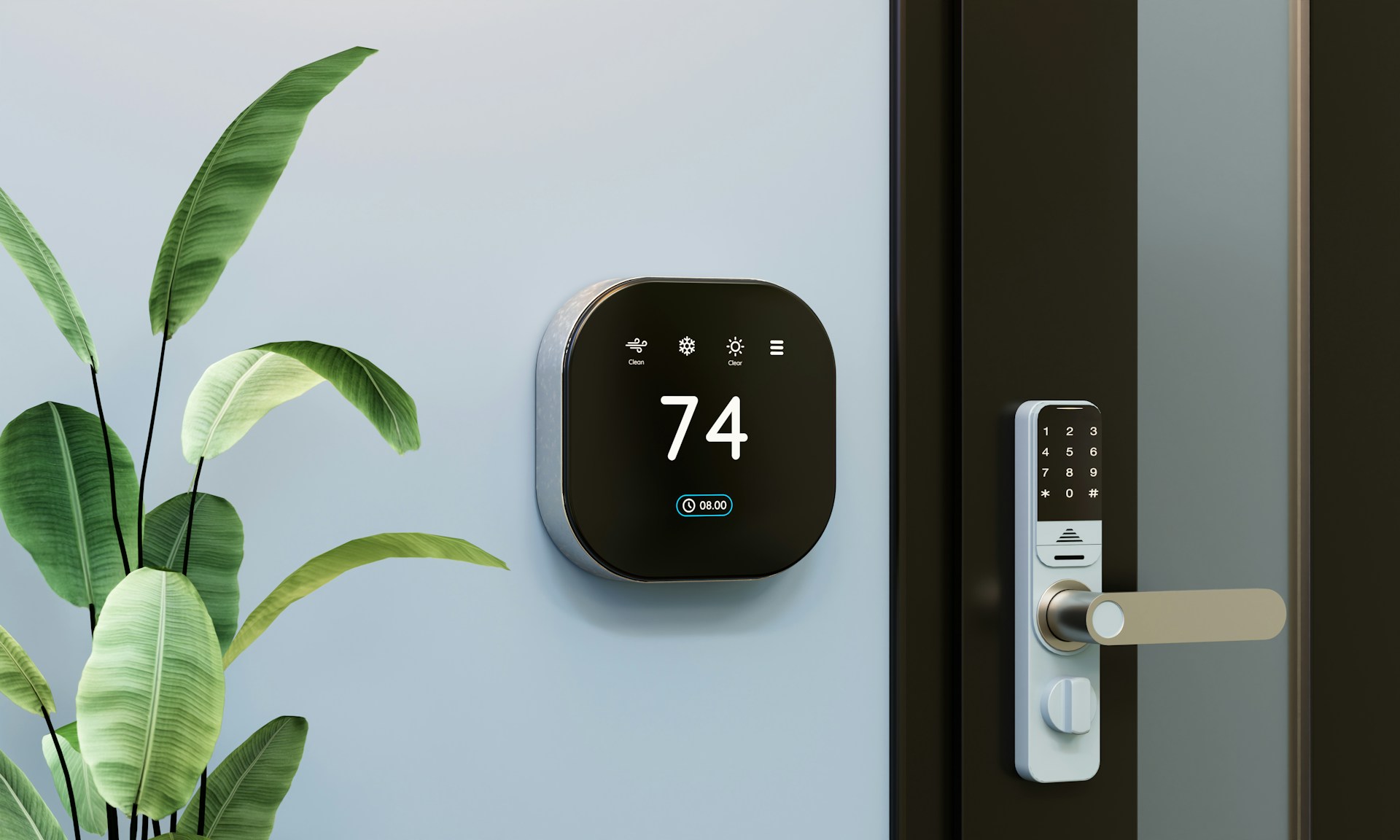A thermostat might seem like a small part of your HVAC system, but it controls the whole show. Whether you’re trying to keep your Fort Smith home cool in late September or maintain a stable indoor temperature, a thermostat that isn’t working correctly can throw everything off. It tells your AC or heat pump when to start and stop, and if it’s not doing that job right, your comfort takes a hit.
When thermostat problems sneak up, they don’t just make rooms feel too warm or too cold. They can quietly drive up your power bill and put unnecessary stress on mechanical components. Sometimes it’s just a weak battery or a dirty sensor, but other times, it’s poor placement or a calibration issue that makes your HVAC system act like it’s getting mixed signals. Whatever the reason, thermostat issues can mess with overall performance far more than many homeowners realize.
Common Thermostat Issues
Your HVAC system’s performance depends heavily on correct instructions from your thermostat. When those signals are off—even just slightly—it can result in temperature swings, poor energy use, and lagging comfort. Below are some of the issues that lead to those frustrating problems.
1. Misreading Temperatures
A thermostat that registers the wrong room temperature can make your HVAC system turn on when it doesn’t need to or stay off when it should be working. This often happens when the sensor inside the thermostat is dirty or covered in dust, affecting its ability to pick up the true room temperature.
Another frequent mistake is thermostat placement. If it’s installed near a window, lamp, kitchen appliance, or in direct sunlight, heat from those sources can cause it to register temperatures higher than they actually are. That leads to systems shutting off too early. On the other hand, drafts from doorways or vents can make it think the room is colder than it really is, triggering more energy use than necessary.
2. Electrical Problems
Sometimes, a thermostat stops working because of internal wiring issues or simple power failures like dead batteries. This results in no signal reaching the HVAC system or interrupted signals that lead to uneven performance.
Symptoms of electrical problems include:
– HVAC unit never powering on or turning off too soon
– Display screen going blank or flickering
– Sudden, unexplained changes in temperature
In some situations, replacing the batteries or checking the breaker might help briefly. But if the same problems keep happening, the wiring may need to be looked at by our professionals.
3. Calibration Problems
Even with the right placement and a clean sensor, calibration errors can still cause trouble. Thermostats need to be in sync with actual indoor temperatures in order to communicate properly with your HVAC system.
If your rooms never seem to match the setting on your thermostat, or if the temperature fluctuates without good reason, calibration could be the cause. These issues can make your HVAC system run longer or shorter than needed, which lowers efficiency and increases wear and tear.
Unlike dusting the exterior or checking batteries, fixing calibration requires tools and experience. Inaccurate calibration doesn’t correct itself, so it needs to be addressed directly by our technicians with the right equipment and training. Skipping that step keeps the problem going in the background, wasting energy without you knowing exactly why.
Next time you’re sweating inside while the AC is running or shivering while the heat’s on, don’t forget to look at the thermostat. It’s often the smallest part of your system but it holds a lot of control over how well everything works.
How Thermostat Problems Affect HVAC Performance
When a thermostat sends wrong or inconsistent signals, your HVAC system reacts by turning on and off at the wrong times. This erratic operation creates a few common issues that Fort Smith homeowners might notice, especially during temperature swings in late September.
One issue seen often is short cycling. That’s when your system starts and stops more than it should. Each cycle uses more energy, reduces indoor comfort, and adds stress to equipment. This can lead to repairs that wouldn’t have been needed if the thermostat was sending accurate data in the first place.
Another side effect is uneven temperature control. One room may feel cool while another is warmer, even when the thermostat setting stays the same. This issue is often rooted in signal delays or misread temperatures from the thermostat. HVAC units rely on clear instructions to keep the entire house balanced. Without that, it becomes harder to stay comfortable throughout the day.
Even energy bills can go up when the thermostat isn’t working the way it should. For example, if the reheating or cooling cycles are caused by a faulty setting or incorrect room reading, it leads to energy waste. Here are a few signs you might see in your home:
– The HVAC system runs longer than needed
– Indoor temperatures don’t match the set temperature
– Utility bills are growing without major weather changes
It’s frustrating to deal with rising costs when the comfort level doesn’t match the expense. Often, a thermostat problem is working behind the scenes to cause that gap.
Simple Maintenance Steps You Can Take
Some thermostat issues can be reduced with ongoing care, while others should be handled by our technicians. For homeowners in Fort Smith looking to extend the life and performance of their HVAC systems, paying attention to your thermostat is a big part of it. Here’s what you can do:
– Gently wipe the thermostat surface every month to keep dust from blocking the sensor
– Check for sources of heat or cold like vents, lamps, or appliances around the thermostat. If it’s poorly placed, it may need to be moved
– Change the batteries annually or when you notice delayed system responses
– If your HVAC runs poorly despite settings looking normal, have our professionals test the calibration
Homeowners might also ask about smart thermostats. These offer better control and features like remote adjustments and usage tracking. If you find you’re constantly adjusting your current thermostat or dealing with strange HVAC behavior, it may be time to upgrade.
Newer thermostat models can work better with high-efficiency HVAC systems, which can help reduce wear and operate more consistently. Before upgrading, have one of our technicians assess your setup to recommend a solution that fits your home and current system.
Getting Ahead of HVAC Performance Problems in Fort Smith
Small issues with your thermostat can turn into bigger HVAC problems over time. If you’ve noticed uneven temperatures, short cycling, or rising utility bills, it’s worth taking a closer look at how your thermostat is behaving. Even well-maintained systems can’t perform their best without a reliable control unit.
By paying attention to things like calibration accuracy, power supply, and installation location, you can avoid unnecessary stress on your system. Each of these small fixes helps reduce energy waste, increase indoor comfort, and keep your HVAC system running longer with fewer disruptions.
For homeowners in Fort Smith, the warmer months aren’t a time to ignore system efficiency. Addressing thermostat problems early, even minor ones, can prevent bigger, more expensive breakdowns. Whether your air conditioning is working overtime or your comfort feels off, that simple thermostat on the wall is a great place to start. Keeping it in good shape helps your entire HVAC system do what it was built to do: keep your home comfortable all year long.
If you’re noticing thermostat issues affecting your home’s comfort, working with an HVAC company in Fort Smith can help identify and clear up these problems before they lead to more costly repairs. Tom’s Heat and Air understands how a simple thermostat adjustment can make a big difference, and our professionals are ready to inspect your setup and offer tailored solutions to bring balance back to your home. For a quick estimate or to book a service visit, please contact us today.



